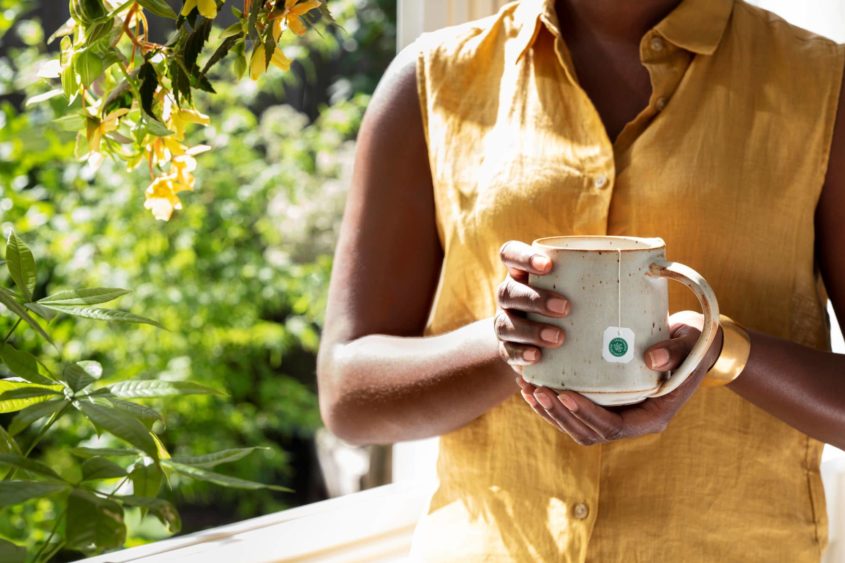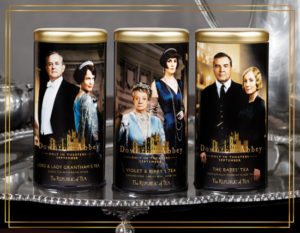
Tea is one of nature’s miracles. It’s produced when the leaves, flowers, bark, or seeds of certain plants and herbs are infused insufficiently hot water to make a satisfying drink, and in the process, many of them also release powerful agents to aid human health. They can relieve indigestion, reduce the effects of high altitude, bring calm to a stressful day, and that’s just a start. Teas as well as botanicals used for herbal infusions have scores of benefits for healing, and while we usually drink them for pleasure, they’re also good for us and more complex than we might imagine.
Legend has it that the first cup of tea came about by accident in China in 2737 B.C. when Chinese emperor Shen Nun’s servant was boiling water for drinking under a tree. Some leaves from the tree fell into the water, and Shen Nun, a noted herbalist, decided to try the infusion. The tree was Camellia sinense, an evergreen that produces the leaves and buds we use for tea, and from that small start, the new beverage grew in popularity and eventually spread around the world. Today, tea is the second most-consumed drink worldwide, with only water exceeding it. Global consumption was estimated to be 6,628 million kilograms (14,613 million pounds) in 2021, according to Statista, a German company specializing in consumer and market data, and that number accounts for Camellia sinense leaves only and doesn’t include botanicals.
True tea
Camellia sinense is native to Asia but is now cultivated in tropical and subtropical countries around the world. It is an evergreen shrub or small tree that does best in a rich, moist location, and at higher elevations, up to 4,900 feet, the plants grow slowly and develop more flavor. It produces several different types of true tea, including black, green, white and Oolong.
“The best tea available for health benefits is green tea,” says Parimala Selvan, M.D., an internist and board-certified lifestyle medicine specialist and wellness coach at Kaiser Permanente Medical Center in Santa Rosa. Green tea has cell-protecting components that help protect the body from cancer and heart disease, she explains, and while it benefits the heart, it’s also good for the brain. “It has a special amino acid that boosts the alpha activity in the brain,” she says, and the result is a relaxed state that lowers blood pressure. She further explains that vascular problems are common causes of memory loss and dementia, and improving heart function increases blood flow to the brain and helps to protect it from the onset of dementia. In addition, green tea has antibacterial benefits and can protect against gastrointestinal infections, help the gut, increase probiotics and treat diarrheal illnesses. It also increases hydration and, as a warm drink, it improves metabolism.
One cup of green tea contains 20 to 40 mg. of caffeine. “It relaxes you and, at the same time, it keeps you sharp and alert because of the caffeine in it,” says Selvan. “You can have it anytime, but not too close to bedtime,” she adds, and she advises adopting the Japanese practice of drinking three cups a day. She recommends against adding milk because its proteins prevent the absorption of polyphenols, the compounds in plant-based foods that contain antioxidants and are beneficial for health.
In addition, certain medications might interact with some components of green tea. It contains vitamin K, which can interfere with blood thinners, for instance, so in such cases, she recommends limiting consumption to one cup a day. “If you are doing it in moderation, it should be okay, but it’s always good to check with your doctor,” she says. Generally, it’s a beverage with a medicinal punch. “I would recommend green tea to protect against cancer and skin disease, help with skin hydration and for its anti-inflammatory properties.” She adds that it also protects against dental caries. “Start the day with a very good cup of green tea. It helps your working memory for the day,” she says. For newcomers to green tea, she suggests experimenting with the best brand of loose-leaf tea they can find and avoiding powdered teas and prepared teas that are sweetened.
Sharon Meyer is a certified nutritionist with Sutter’s Institute for Health & Healing, who provides one-on-one nutrition consulting with patients. “It’s really looking at food as medicine—and not forgetting the yum part of it as well,” Meyer says. She explains that plant-based foods and beverages contain phytonutrients or phytochemicals, which are important because they work with antioxidants, vitamins and minerals. “The antibacterial, antiviral, antimicrobial properties turn on our healthy genes,” she says, and they repair cells without changing the DNA. In addition, phytonutrients are important for supporting the immune system, reducing inflammation and protecting the brain, heart and liver. “Every cell in our body needs phytonutrients. They’re super powerful,” she says, and they have a positive impact on health.

Certain teas contain phytonutrients called flavanols, and they also have catechins, a type of phenolic compound. Black tea has some polyphenols that are helpful, but green tea is a powerhouse, with flavanols, polyphenols and a high level of antioxidants, as well as ECGC, major catechin that is believed to help prevent inflammation and cell damage. In addition, it contains caffeine, a phytochemical that is good for the brain’s function, and theanine, an amino acid with anti-anxiety properties. Thus, green tea has two major components that contribute to a healthy lifestyle: caffeine to stimulate the brain and theanine for its calming effects. It also jumpstarts the metabolism, increasing the metabolic rate and making it useful in weight management. “Any of the supplements for weight management will have green tea,” Meyer reports. In addition to lowering high blood pressure, it reduces cholesterol, and while all green tea is beneficial, jasmine green tea, in particular, has some important polyphenols that are healthful, and an Israeli study identified a compound in it that appears to reduce the depth of cancer cells.
Herbal infusions
In herbal teas—or tisanes—fresh or dried flowers, fruit, leaves, seeds, or roots of edible plants are steeped in hot water to release their beneficial properties in much the same way as true tea. Selvan reports that herbal remedies have become popular in response to the COVID-19 pandemic, as people seek ways to boost the immune system. Among them is an infusion popular in the Ayurvedic community that contains a teaspoon of cumin, coriander, fennel and some grated fresh ginger. “It’s immunity-boosting and helps with digestion,” she says. Turmeric is recognized for its anti-inflammatory properties, and ginger also has benefits. “We all know how beneficial ginger is,” she adds, and she suggests boiling one cup of water with a pinch each of ginger, turmeric and black pepper to make another infusion that’s rich in magnesium, zinc and calcium. All plants contain vitamins, and her favorite herbal drink is a blend of lemon, known for its vitamin C content, and cinnamon, which contains antioxidants and has anti-inflammatory properties.
Meyer points out that tea was used as medicine before it became a drink. Among the tisanes with beneficial properties, she lists peppermint tea to help with digestion, fenugreek seeds in hot water to stimulate breastfeeding, hibiscus for its anti-tumoral properties, lemon verbena to help with fatty acids and weight loss and ginger to help circulation and combat nausea. She recommends green tea with bits of ginger for cancer patients because it’s very soothing. She adds that rooibos, red bush tea from South Africa, is valued for its anti-inflammatory properties. In June 2021, the European Commission certified it, giving it a registered and protected designation of origin, like Champagne.
At Traditional Medicinals in Sebastopol, the focus is on all-natural herbal remedies to alleviate the symptoms of a variety of ailments and promote good health. Guido Masé, herbalist and principal scientist, believes that we should pay attention to plants and traditional methods so we can gain insights that will improve our lives. He gives the dandelion as an example. Dandelion tea enhances digestive function and can relieve heartburn, gas and bloating. You need to experience the bitter flavor, so Traditional Medicinals roasts the root a little to caramelize it and make it sweeter and then makes a tisane that enables the digestive system to break down food so the body can digest it better. Typically, people consume it at mealtimes so it will have the best effect. Masé is a clinical practitioner who works with individuals in the community, and he recalls advising a man suffering from heartburn to drink dandelion tea. His condition improved, and when he discovered that the dandelions in tea were the same species as the ones growing in his lawn, he decided to stop spraying Roundup to eradicate them. He made a connection that led him to value the plant, Masé explains, and improve his own life.

Traditional Medicinals offers a large variety of both herbal teas and true teas, and the most popular ones support digestive function and help with seasonal wellness. The balance of ingredients is important, and Masé gives Smooth Move as an example. It is based on senna leaves, which contain anthraquinones, organic compounds that gently stimulate the colon and have a laxative effect. “It’s reliable and effective for its intended use,” he says. However, the senna leaves are combined with other ingredients that relax the colon and make the experience comfortable.
Since the United States doesn’t require herbal product manufacturers to use specific standards for medicinal plants as other countries do, Traditional Medicinals sets its own to guarantee the safety, efficacy and consistency of its products. Masé explains that by establishing baselines, such as the ethical treatment of growers and wild collectors, harvesting at the correct time and insistence on a pure, unadulterated product, it’s possible to develop a series of specifications and certifications to ensure quality and ethical practices. “When the material comes into our facility in Sebastopol, it has to undergo a series of tests,” says Masé. Quality scientists and experienced tasters conduct the tests, which include tasting and smelling, identifying a product’s key features under a microscope and chemical analyses. “It’s a pretty high bar,” he says. Chamomile, for instance, undergoes volatile oil tests because while the oil gives it an appealing aroma, the proper level is essential if an infusion is to have the desired relaxing and soothing effects.
He also explains that herbs must be cut to increase the surface area, or water won’t penetrate them enough during steeping to release the medicinal compounds. In addition, each dose has to be safe and consistent, so the teas are put into bags that are filled at the last possible moment to ensure freshness.
Medicinal teas contribute to good immunological health, but they also help support people’s wellbeing. “Being able to wind down with a cup of herbal tea is a great way to help you relax,” says Masé. It can also help one disentangle from work, get a good night’s sleep and set the stage for a good start to the following day. In addition, a warm cup of fluid makes one feel centered and has intangible benefits in the way it soothes the spirit and is part of a self-care strategy.
Seeking a healthful lifestyle
“Overall, more and more people are sipping teas and herbs for various reasons,” says Kristina Richens Tucker, Minister of Enlightenment and Commerce at The Republic of Tea, which has its headquarters in Larkspur. “Immunity teas were selling rapidly at the beginning of the pandemic,” she reports, but over time, people have gravitated to teas for other benefits. Hibiscus teas have grown significantly, following a study on its benefits by Tufts University, and she speculates that as people learn more, they’re experimenting with new flavors. Plus, teas are enjoyable to drink. “It’s so delicious,” she says.
The Republic of Tea has a sip team with a lab, and once they identify an herb for a specific purpose, they start looking at flavors that complement that herb. They might use mint or a berry to complement another attribute, and “We get our inspiration that way. It all happens in the lab,” she says. A tisane might be based on a new flavor the company wants to introduce to its citizens (customers). Often times citizens are creative and suggest ideas, which are always welcome. The process involves a lot of tea-sipping and trial and error, but it’s productive, and the team has fun.

A new collection in partnership with Calm (get.calm.com), an app that provides resources to build mental fitness, which includes soothing sleep stories, guided meditation and music, includes three teas: Focus, Rest and Relax. Calm Focus is a green tea with shaggy lion’s mane mushrooms for cognitive health, lemon for focus and peppermint. Calm Rest contains chamomile and lavender, and the principal ingredients in Calm Relax are rooibos and dandelion root. The collection’s intention is to help people with their mental wellbeing, and each encourages getting adequate rest. Beauty Brain is from a line called Beautifying Botanicals, and it has two functional ingredients: lion’s mane mushroom, which is used in traditional medicine to aid mental health, and gingko biloba to help with memory. It also contains white hibiscus, lemon balm, which has stress-relieving properties, and kiwi to create a lovely light golden beverage.
“We have over 300 varieties of teas and herbs,” says Tucker. The teas provide plenty of choices so individuals can go in the direction they need for their healing. The teas and herbs come from more than 50 different countries, with true teas coming from China, Japan, India and Sri Lanka, rooibos from South Africa, chamomile from Egypt and Italy and hibiscus from Nigeria. “Nigerian hibiscus has the most brilliant color,” she says. “We have a very rigorous standards assurance team, and everything is tested. We make sure the taste of the tea remains consistent and delivers the best experience.”
Enjoying tea
Tucker considers tea part of a healthy lifestyle. “You sip tea; you don’t gulp it,” she says, and the experience makes you feel present and is something you can repeat over and over again and still get satisfaction. She points out that the antioxidants in tea help with health, but simply preparing and drinking tea is an opportunity to take time for yourself and others because the ritual of tea is a source of pleasure and often something you share.

The Business of Tea
Tea is big business. In 2021, Traditional Medicinals ranked No. 53 in NorthBay biz’s Top 500, a curated list of companies doing business in the region, reflecting the growing interest in tea, both true and botanical. The Tea Association of the U.S.A. Inc., which tracks the Camillia sinense industry, reports the following:
More than 159 million Americans—half the country’s population—drink tea on any given day.
Tea is found in 80% of all American households.
Four in five consumers are tea drinkers. Millennials are the most likely consumers with 87% of them drinking tea.
More than half of the American population drinks tea.
Market Research Future reports that consumption of herbal teas is on the rise and predicts that the global market will reach $2,269.8 million by 2025. The drivers are high demand for functional beverages, the launch of innovative flavors and rising demand for organic products.
Loose-Leaf or Bags?
Tea comes in two forms, loose-leaf or in bags, and while tea aficionados often believe that loose-leaf is superior, most people use bags. Kristina Richens Tucker of The Republic of Tea explains that more essential oils are available in loose-leaf tea, but the company blends all its teas to be delicious in either form. She believes that choosing tea is a personal choice. “It’s all about how it’s most convenient or lends itself to how people want to enjoy it. However, you design your own ritual is great.”
Proper preparation makes a difference, and most teas are best with water that is well off the boil. Tucker explains with Camellia sinsense teas, if the water is too hot or the tea is steeped too long, it can become bitter. Some people, though, like it that way. Containers give instructions for preparing tea to get the best flavor and benefit, but individual taste also plays a role.
Cooking with Tea
Certified nutritionist Sharon Meyer suggests checking out Bon Appétit magazine’s list of 25 ideas for eating and drinking tea to explore new ways to consume tea. Compiled in 2015, the recipes range from matcha-white chocolate sugar cookies to tea-poached plums. For more information, visit bonappetit.com.



